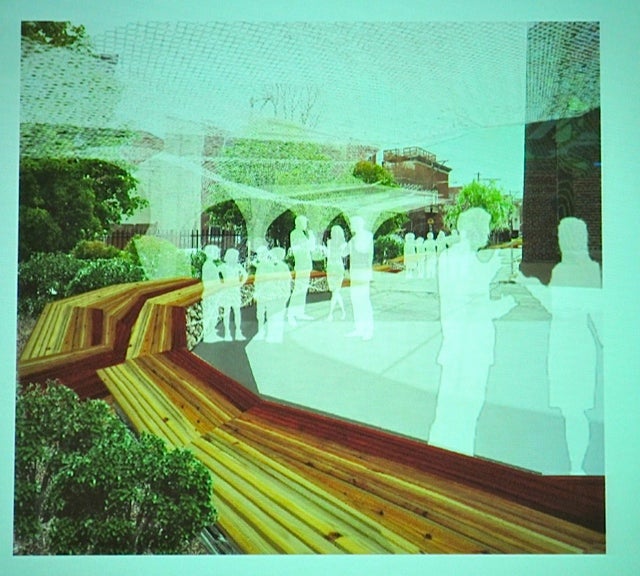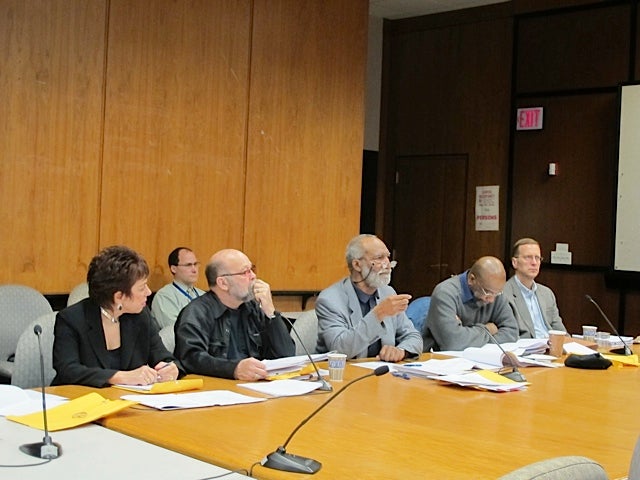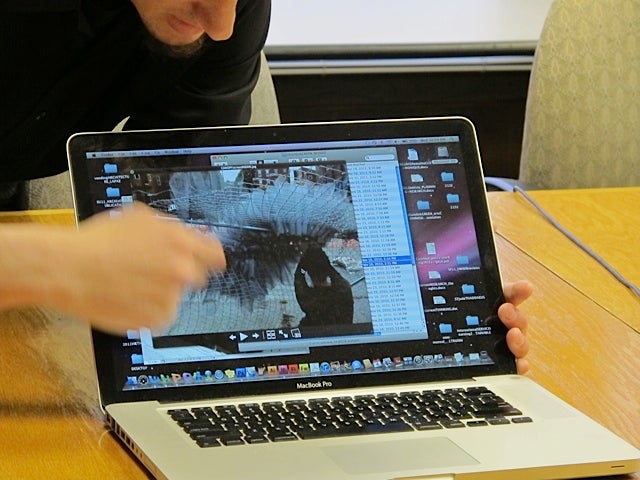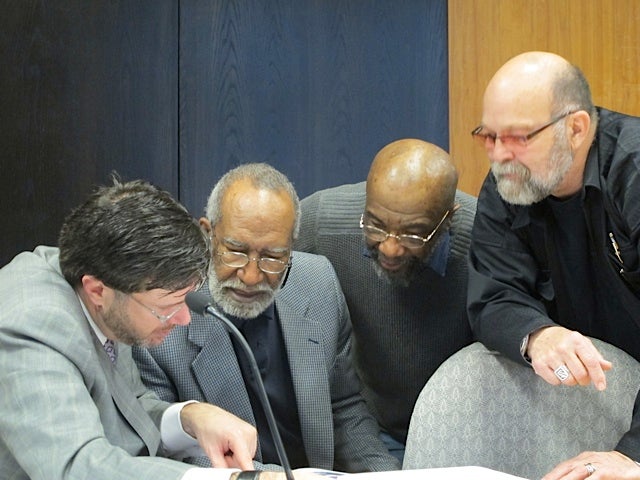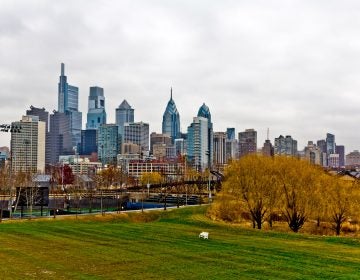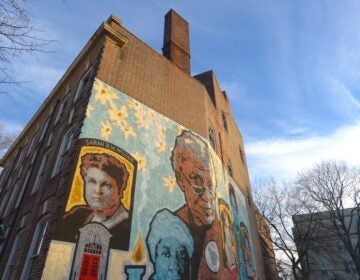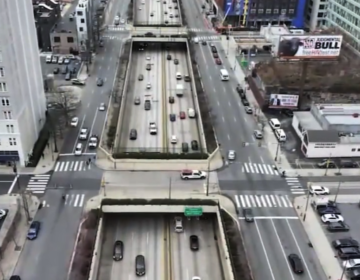At Art Commission, of murals and mansions
Wednesday’s meeting of the Art Commission presented a morning of surprises and confusion contrary to what promised to be a relatively simple agenda of three items.
The final project submitted for approval, an installation at Northern Liberties’ Bodine High School for International Affairs, presented a head-scratcher to everyone in the room. Although the element under review — an undulating trellis crafted of recycled chain link fence to cover a “green sanctuary” in the building’s schoolyard— was ultimately approved, an already-completed component raised eyebrows.
How did it come to be, Commissioners wondered, that a mural splashed (literally, part of it pays homage to Hokusai’s iconic woodblock “The Great Wave”) over a public school faced in elegant brickwork had never appeared before the Commission?
The answer, according to staff director William Burke, was that since painting requires no permits, the project was never kicked over to L&I or the Commission. “That’s unfortunate because it’s a public building,” said Chair Moe Brooker, adding that he was “surprised at what’s been done to the building,” and “wasn’t sure” that the murals did anything to reclaim or improve the school. “I find this to be a shock, visually,” he added.
The revelation triggered a discussion about whether murals on public buildings need to brought before the Commission, no matter what. Commissioner Emmanuel Kelly suggested “we say to the School District that any . . . changes to facades must come to us,” while Commissioner Karen Davis added that the “issue is bigger than school buildings, [it’s] about murals.
Commissioner Robert Roesch wondered if the Mural Arts Program was “losing its [sense of] discovery? It’s becoming billboard-like,” he said.
Mural fatigue seemed evident in the middle case, too, even if it was the only one that went off relatively smoothly. The project concerns a $120,000 pre-fab concrete concession building that will replace a temporary stand in Fishtown’s Hetzell Playground.
Commissioners were primarily interested in the look of the building’s exterior, with Commissioner Kelly asking for assurances that its color would be “toned down,” and Commissioner Debra Wolf Goldstein suggesting instead that it might be a good place for a Mural Arts work. Brooker, however, thought that a mural would “absolutely overwhelm the building,” and Roesch concurred, saying that the building would offer a “nice little architectural presence — leave it alone.”
The meeting opened with a second go-around concerning the addition of a function tent near Belmont Mansion in Fairmount Park. Calling the submission “deficient,” Commissioners Kelly and Jose Alminana grilled architect Joseph Jancuska of j2a Architects about gutters and trees and site remediation. “I don’t want to see this job taken for granted,” concurred Brooker. “I’ve seen this particular place kicked around for a long time.”
Jancuska has already appeared once before this Commission and twice before the Historical Commission, where he received approvals. He also has gotten a green light from the Parks & Recreation Department, he pointed out. The architect seemed frustrated by the varying parties and recommendations, in one instance countering Alminana’s demand that trees be replanted after construction with a mention that Parks & Rec had a different mandate. They want us to take down the trees,” he said, ‘because they hurt maintenance of the building.”
Commissioners debated whether the project should be provisionally approved, but Kelly held out, requesting that the submission be withdrawn and the architect go back to the drawing board.
This contentious opening case set the tone for the rest of the meeting, and raised questions about how things get done in Philadelphia. When architects don’t know who they’re supposed to listen to — and are forced to draw by committee — and when the raison d’etre of Commissions can be circumvented (as in the school mural case), some serious hierarchy, streamlining, and flow charting needs to be put in place.
Contact the reporter at jgreco@planphilly.com
WHYY is your source for fact-based, in-depth journalism and information. As a nonprofit organization, we rely on financial support from readers like you. Please give today.



